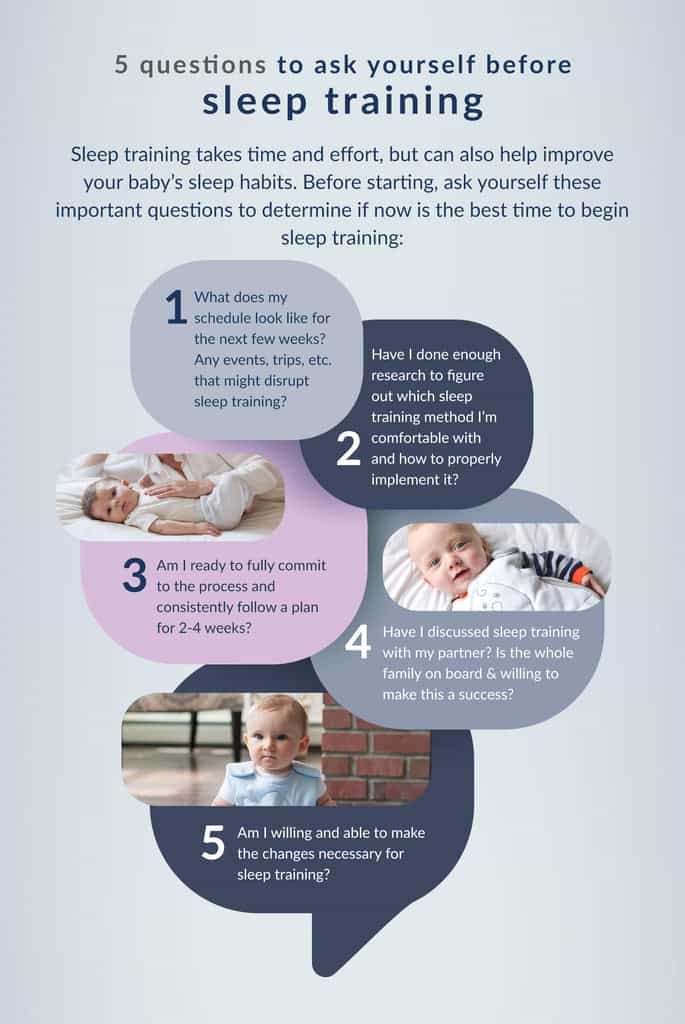Get Ready for Sweet Dreams: Sleep Training Your Newborn
Hello there, exhausted parents! Are you dreaming of a full night’s sleep? Do those dreams seem as distant as the peaceful slumber of your adorable but wakeful newborn? Fear not, for we bring you the Ultimate Guide to Sleep Training Your Newborn! This guide is just brimming with tips, tricks, and gentle strategies to help your little bundle of joy (and you!) get the rest you all desperately need.
Understanding Sleep Training: What It Is and Isn’t
Before we dive into the how-tos, let’s set the crib straight on what sleep training is. Sleep training is a process that encourages babies to fall asleep on their own and stay asleep through the night. It’s not about letting your baby cry unattended or being harsh. It’s about establishing healthy sleep habits that will benefit the whole family’s wellbeing. So, put on your comfy pajamas, and let’s start this restful journey together!
Chapter 1: Is Your Newborn Ready for Sleep Training?
Assessing the Right Time
Timing is everything when it comes to sleep training. Most experts recommend starting when your baby is between 4 and 6 months old. That’s when they physiologically develop sleep cycles and can learn to soothe themselves. But as every baby is unique, some may be ready a little earlier or might need a few more weeks. Look for signs like self-soothing (sucking on fingers or thumbs) and sleeping for longer stretches at night. Also, ensure they’re gaining weight and have a predictable feeding schedule – signs that they’re thriving and can safely extend the time between nighttime feeds.
Creating a Soothing Sleep Environment
A calm and comfortable sleep environment is the foundation for successful sleep training. Keep your baby’s room at a comfortable temperature, usually between 68 and 72 degrees Fahrenheit. White noise machines can be magical, providing a gentle hum to help drown out household noise. Opt for a firm crib mattress with a fitted sheet and remove any loose blankets, pillows, or stuffed animals to ensure it’s a safe sleep space. A nightlight can offer a comforting glow if your baby is restless in the dark.
Chapter 2: Laying the Groundwork for Sleep Training
Establishing a Consistent Bedtime Routine
Consistency is key to teaching your little one when it’s time to wind down. Begin by crafting a bedtime routine that you can stick to every night. This might include a warm bath, a soft massage, changing into cozy pajamas, reading a bedtime story, and dimming the lights. Remember, the goal here is to signal to your baby that sleep time is approaching.
Recognizing and Utilizing Sleep Cues
Let’s not underestimate the power of understanding your baby’s sleep cues. Yawning, rubbing eyes, fussiness, and staring off into space often mean that your baby is ready for sleep. When you start noticing these cues, it’s prime time to begin your soothing routine and help them glide smoothly into sleep land.
Stay tuned, weary caregivers! In our upcoming sections, we will delve deeper into specific sleep training methods, how to handle night wakings, and what to do when you face setbacks. Whether you’re leaning towards the gradual Ferber method or considering a no-tears approach, we’ve got you all covered with compassionate insights and practical advice. Soon you’ll not only be crafting your perfect cup of coffee in the morning; you’ll actually be awake and chipper enough to enjoy it. Join us as we continue this snooze-filled adventure together!

5 Essential Preparation Steps for Sleep Training a Newborn
1. Know the Sleep Training Basics
Before you start, it’s vital to understand the basic principles of sleep training. It’s a method to teach your little one to self-soothe and sleep independently. Sleep training can involve various techniques, from the ‘cry it out’ method to more gradual approaches. Choose one that aligns with your parenting philosophy and your baby’s temperament.
2. Establish Daytime Routines
A consistent daytime schedule helps regulate your baby’s internal clock. Ensure that nap times, feedings, and playtimes occur around the same times each day. This predictability can greatly influence how your baby sleeps at night. A well-rested baby during the day is often better at self-soothing during the night.
3. Be Patient and Flexible
Patience is paramount in sleep training. Some babies take to it quickly, while others need more time to adjust. Be prepared for some trial and error; what works for one baby might not for another. Flexibility allows you to adapt the methods as needed, prioritizing your baby’s comfort and needs.
4. Create a Bedtime Ritual
As mentioned earlier, a calming bedtime routine is crucial in setting the stage for sleep. Whether it’s a bath, book, or lullaby, these activities should signal that it’s time to wind down. Consistently following a ritual helps cue your baby that slumber is near. Stick to it, and soon your little one will associate these activities with bedtime.
5. Ensure Everyone is Onboard
If multiple caregivers are involved, make sure everyone agrees on the sleep training approach. Consistency across caregivers helps the baby understand and adapt to the routine. Sleep training is a team effort, and everyone’s cooperation is needed for it to be successful.
Now that we’ve covered the preparation essentials, we’ll move forward with further in-depth strategies, tackling common challenges, embracing the process, and celebrating the victories, no matter how small. With dedication, patience, and love, you’ll be well on your way to nights filled with restful sleep for both you and your precious newborn. So snuggle up, read on, and let’s gently guide your baby into a world of sweet dreams and restful nights.
See more great Things to Do with Kids in New Zealand here. For more information see here
Disclaimer
The articles available via our website provide general information only and we strongly urge readers to exercise caution and conduct their own thorough research and fact-checking. The information presented should not be taken as absolute truth, and, to the maximum extent permitted by law, we will not be held liable for any inaccuracies or errors in the content. It is essential for individuals to independently verify and validate the information before making any decisions or taking any actions based on the articles.




